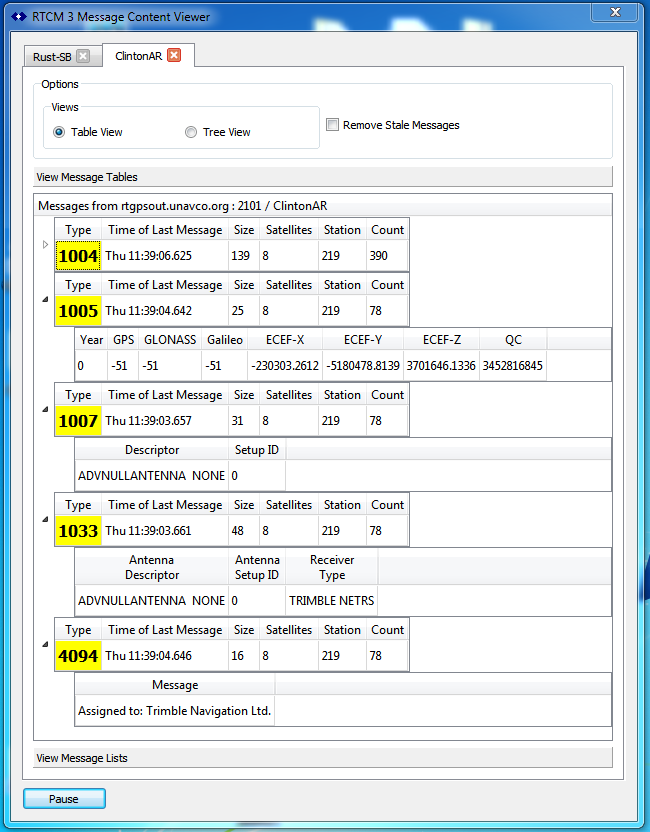A common SNIP message decoder question is…
I see a message type appearing in the RTCM3 decoder with ADVNULLANTENNA – what is this for?
The Use of ADVNULLANTENNA
 This indicates a “null antenna” antenna type used (often by Trimble GNSS devices) to denote that the end user (the rover device) does do not have to deal with additional antenna offset corrections.
This indicates a “null antenna” antenna type used (often by Trimble GNSS devices) to denote that the end user (the rover device) does do not have to deal with additional antenna offset corrections.
More precisely, it means all such calibration offsets have already been incorporated (baked-in) into the measurements which that data stream is providing.
This is used in a two places in the RTCM 3 messages as follows. The type 1008 message (or MT1007) and the type 1033 message. If it is not present. The type 1006 message is present, then each NTRIP Client Rover device knows to seek there for other suitable offsets.
If another value is found here, it indicates the official name of an antenna which can then be used to lookup calibration factors for that model. Seek here for a popular list: https://www.ngs.noaa.gov/ANTCAL/
Hint: You can also quickly see the antenna type and any offsets that are present by hovering the mouse over the mountPt label for each stream. The resulting tool tips summarizes key information about the Base Station from the RTCM3 messages.
FYI, Rover device setups should also use the ADVNULLANTENNA setting in sending these message, if desired.
Note:
The alternative terms NULLAntenna and NULLANTENNA NONE and GPPNULLANTENNA are also used for ADVNULLANTENNA, odd capitalization styles have also been observed in the wild as well.
Note:
There is a growing pile of evidence that some older Trimble models need to see this in MT1008, even if the values are set to be empty strings, in order to use corrections provided by other models of Base Stations. SNIP‘s PFAT tools can be used to achieve this.
Do I have to send this message?
No it is not required, but it helps others to understand the Base Station setup.
If you determined your Base Station location by taking a long time average position of your antenna and submitting that to OPUS or some other service (as described here), then you have already incorporated these offsets into the measurements which that data stream is providing.
PFAT feature
One of the PFAT Add functions can create this message (with ADVNULLANTENNA as the description content) for those Base Stations that cannot provide it. Any desired text can be entered and used (hence all antenna types are supported). The most popular terms can be selected in a drop down (ADVNULLANTENNA, NULLANTENNA, GPPNULLANTENNA. etc.). There is some evidence that certain rover designs may require this message to be present. This ability can be found in the Translate dialog “Station Details” that supports changing various Base Station configuration details.
Further Details
The below links show provide informative data where other Caster networks have had to deal with this issue.
http://www.epncb.oma.be/ftp/mail/EUREF/eurefmail.6566
http://kb.unavco.org/kb/assets/773/Infrastructure_GNSS-SeriesReceivers_48.01_RelNotes_42980.pdf
